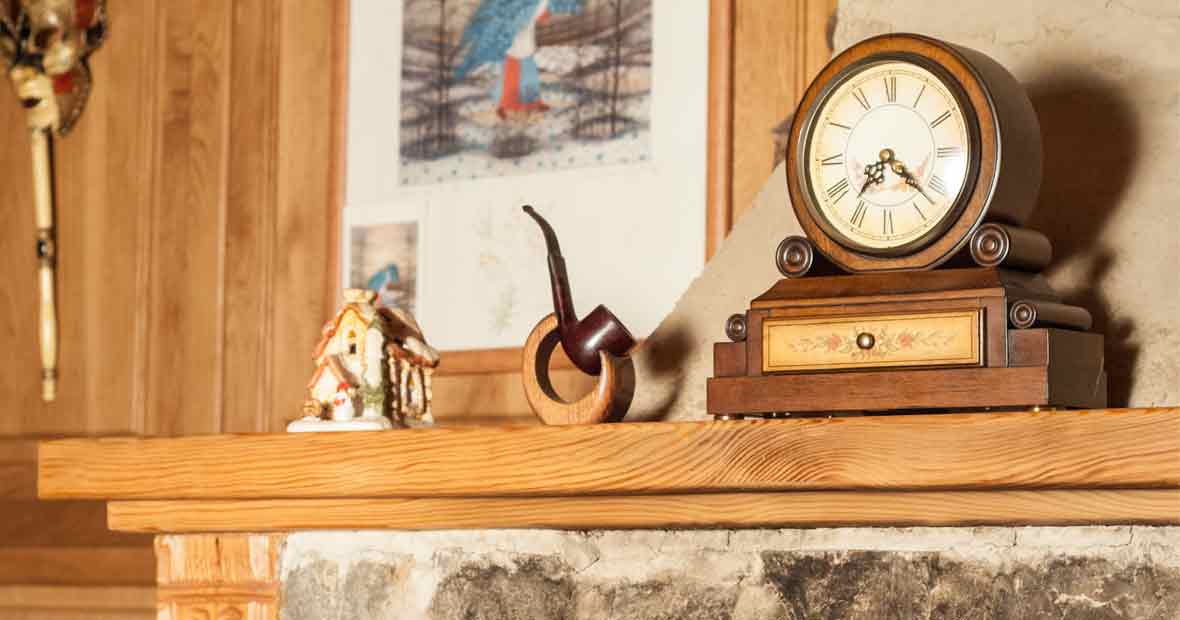
In the rich tapestry of history, few artifacts encapsulate the essence of an era as well as the French Empire mantel clock. Beyond its timekeeping function, the mantel clock embodies the art, culture, and values of a nation during its golden age. This article explores the clock's intrinsic artistry, its makers, materials, mechanisms, and its broader societal significance.
Design Elements: The Quintessence of Empire Style
Design is at the very core of the French Empire mantel clock. The Empire style, a direct reflection of the socio-political environment, became an epitome of luxury and opulence.
Neoclassical Inspirations and Mythological Themes
As an offshoot of the neoclassical movement, these clocks often depicted scenes from ancient myths, cherishing Greek and Roman cultures. They would feature figures like Apollo, Venus, or Hercules, symbolizing power, love, or heroism, intricately designed to celebrate the Empire's grandeur.
Gilded Bronzes and Opulent Finishes
Luxury was paramount in the Empire era. The generous use of gilded bronzes ensured that these clocks shone with a rich golden hue, becoming the centerpiece of any room. These finishes, achieved using the complex ormolu technique, were not just for show; they spoke volumes about the owner's class and taste.
Symbolic Motifs: Eagles, Sphinxes, and Laurels
Symbols acted as a visual language, with eagles representing imperial power, sphinxes denoting mystery and knowledge, and laurels being symbols of victory. They added depth to the design, turning a timepiece into a story-teller.
Notable Clockmakers of the Era
Behind every exquisite mantel clock was an artisan with unparalleled skill and vision.
Renowned Artisan: André-Charles Boulle
Boulle's work is synonymous with French decorative art. Often merging wood with metals, he produced pieces that were not just functional, but also visually arresting, marking him as a true master of his craft.
Pierre-Philippe Thomire's Masterpieces
Thomire's creations stood out for their grandeur. A sculptor turned clockmaker, he infused his pieces with a sense of drama, making them unparalleled in design and detail.
Contributions of Jean-François Bautte
Bautte's legacy lay in his intricate designs. As a watchmaker, he took the precision and miniaturization from his main craft and applied them to mantel clocks, creating pieces that were not just beautiful but technologically advanced.
Materials and Techniques: The Essence of Craftsmanship
The brilliance of these clocks lies not just in their design but also in their making.
Precision in Bronze and Ormolu
Bronze gave these clocks heft and durability. Using the ormolu process, artisans would apply thin layers of gold to bronze, achieving an opulence that defined the Empire era.
Marble Bases: Stability Meets Beauty
Marble provided a solid foundation and added to the aesthetic appeal. Its intricate veins and cool touch contrasted beautifully with the warm, gilded surfaces.
Exquisite Enamel Work in Clock Faces
The clock faces, adorned with enamel work, were works of art in their own right. Through meticulous painting and firing processes, the faces displayed time amidst artistry.
The Evolution of Mechanism: Precision and Artistry
While the outer design was captivating, the inside mechanics were evolving and fascinating.
Transition from Weight to Spring-Driven Movements
The switch to spring-driven movements marked a technological advancement. This not only streamlined the design but also increased accuracy.
The Art of Chimes: Auditory Elegance
Beyond visual splendor, the melodious chimes of these clocks added an auditory dimension, transforming a simple hourly alert into a symphonic experience.
Collaborations between Clockmakers and Artists
To achieve their vision, clockmakers often collaborated with artists. This synergy led to pieces that were as much sculptures as they were timekeepers.
Societal Influence: The Mantel Clock's Role in French Homes
Mantel clocks were not mere decorative pieces; they held a mirror to society.
Status Symbols for the Elite
Owning a mantel clock was a statement. It signaled wealth, taste, and influence, especially if made by renowned artisans.
Reflecting Political and Social Epochs
Design motifs often mirrored the prevailing political sentiment. For instance, Napoleonic eagles during Napoleon's reign symbolized the Emperor's dominance.
From Parisian Palaces to Bourgeois Homes
Initially reserved for the aristocracy, as production techniques improved and became more widespread, mantel clocks found their way into bourgeois homes, becoming a staple of French interiors.
Preservation and Restoration: Cherishing the Legacy
With time, preserving these clocks has become crucial.
Challenges in Maintaining Authenticity
Restoration requires a delicate balance between maintaining originality and ensuring functionality, often demanding a deep understanding of both art and mechanics.
Modern Techniques for Ancient Artifacts
Today's restoration methods use advanced techniques, from 3D printing missing parts to using non-invasive cleaning processes, ensuring the clocks remain undamaged.
Curating Collections: Museums and Private Collectors
Museums worldwide house these masterpieces, while private collectors, understanding their value, have dedicated resources to their maintenance and display.
The Timeless Elegance of French Empire Mantel Clocks
Reflecting a Bygone Era of Artistry
The French Empire mantel clock is a testament to a time when artistry was paramount. It speaks of an era where every object was designed with thought, passion, and precision.
Modern Appreciation for Historic Beauty
Even today, these clocks captivate with their intricate designs and rich histories, becoming a bridge between the past and the present.
The Continual Fascination for Collectors and Historians
For collectors and historians, the allure lies in the story each clock tells, its place in history, and the craftsmanship it showcases, ensuring that the legacy of the French Empire mantel clock remains undiminished.